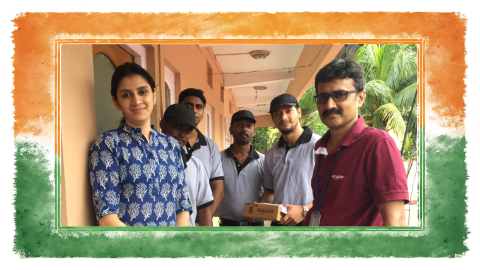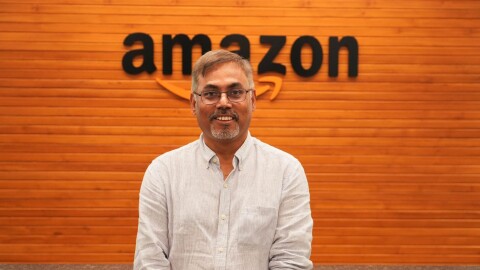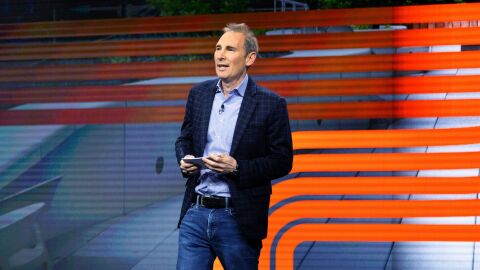
A radical shift in grocery shopper behavior in recent times has caught the eyeballs of grocery industry players. They have been devising various ways to cater to changing demands. Amazon Retail, which has been in the grocery business in India since 2017, and had by and large paved the way for other grocery and quick commerce players, has been working to up its game in the segment.
Firstly, let’s understand how the sector is changing. Wide-scale online adoption, the advent of modern trade, and the availability of quick commerce options to satisfy customers' changing daily demands, among others are some of the major factors that have changed the grocery landscape, particularly in terms of customer expectations.
Specifically, the Indian consumer has been evolving dynamically in the quest for convenience, health, and value – a report by the consulting firm McKinsey stated. Thus, it is expected that any grocery business that caters to those factors would be able to get an upper hand in the sector.
Understanding the challenge and the demand very well and with 20 years of retail experience from across the world, Amazon Retail has decided to narrow down its target to become the 'most structured grocery retailer' in India to succeed in the segment.
At Amazon, we want to focus on those parameters: convenience, quality, and high value.
Rajesh K Prasad, Category Leader, Amazon Retail India stated, “Our end goal is to be India’s most structured grocer. At Amazon, we want to focus on those parameters: convenience, quality, and high value."
The company understands that a) there should be a wide range of grocery options present because customers should be able to build their complete basket; b) the items should be available at the right value – pricing solutions should be in line with the customer expectations. c) the convenience of being delivered at home and the quality level should be kept into consideration.
Amazon Retail will be working to excel at all three levels to achieve its goal to become the most structured grocer.
Highlighting how consumer demands are changing, Prasad shared, "For the last 15-18 months, we are seeing interesting trends: 65 percent of the customer’s orders and almost 85 percent of our new customers are from Tier-II cities. More than 60 percent share of sales is coming from Tier-II and Tier-III cities."
Simplifying supply chain
To build a strong position and achieve its goals, Amazon Retail has been working to set up 'collection centers' across India to facilitate the supply chain between farmers and end consumers. This is understandably essential to sort out first because the Indian landscape is complex and non-homogenous from region to region. For instance, conducting a grocery business in say coastal Maharashtra is widely different from a hilly Himachal Pradesh.
"Collection Centre is a concept where you set up infrastructure as close as to the production area to procure local produce from farmers and deliver it to our customers," he stated.
The company has recently launched its first mango collection center in Ratnagiri, Maharashtra. This facility is a channel to provide a source of mangoes like Ratnagiri Alphonso, Devghad Alphonso, Organic Alphonso, and premium Kesar variants among others for the customers, the company reported.
Also, this collection center assures farmers of fast payments, fair and transparent pricing, and guidance on farming. And, based on the success and demand from the consumers, the company will launch more such collection centers going forward.
Technology: The game changer
In this digital age, the role of technology is critical for the success of any business venture. Technology plays a critical role right from sourcing raw materials, all along the supply chain, to the final customer endpoint. Using the right technological tools can largely improve the overall efficiency.
The team is very proud to say that it is building from ground zero where we are working with farmers from across the spectrum of solutions.
"We look at technology from 3 buckets in the grocery business: one is customer backward – so our concept of learning from the customer comes there. So that’s one part of technological intervention. Second is the extreme end of the supply chain - for example our farmers. India is the first country in the world where Amazon has all the way started working with the farmers. The team is very proud to say that it is building from ground zero where we are working with farmers from across the spectrum of solutions," Prasad explained.
"We provide timely consultations and farm management tools available to farmers when they are onboarded," he further added.
Also, Amazon Retail is reported to be building complete in-house agritech solutions and sharing with farmers so that output comes better for its customers.
"Then there is a supply chain in between from our farmers to our customers where we are building our wholesale solutions, time management tools, sorting and creating solutions, where at every stage of critical control we are able to identify or solve for quality and time and speed related issues. So, that the customer gets fresh stocks," Prasad further stated.
How competition is affecting amazon's business
The Q-commerce sector which is understood to be one of the fastest-growing e-commerce models is expected to grow 10-15 times to $5 billion by 2025, from $0.3 billion currently. Given the rapid growth in the sector with many new entrants in the market, the grocery business would obviously face an impact of the same. Amazon Retail, however, takes a positive outlook towards it.
We are happy that many Q-commerce players are virtually repeating what Amazon has been doing.
"It is a celebratory situation to have companies foraying into the Q-commerce because this establishes the fact that Amazon has been building for 5-8 years in grocery. We are happy that many Q-commerce players are virtually repeating what Amazon has been doing," he asserted.
Also, given grocery is the fastest-growing category for the brand, it has been looking at newer ways to serve its customers, solve customer challenges and deliver groceries online.
This article first appeared in Indianretailer.com and has been reproduced with permission.











